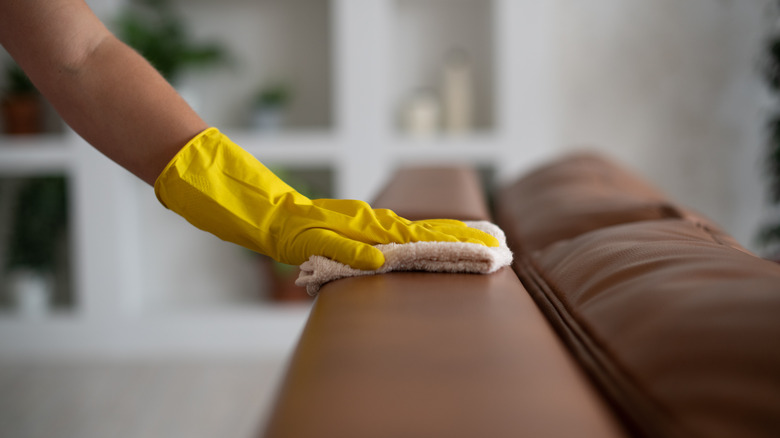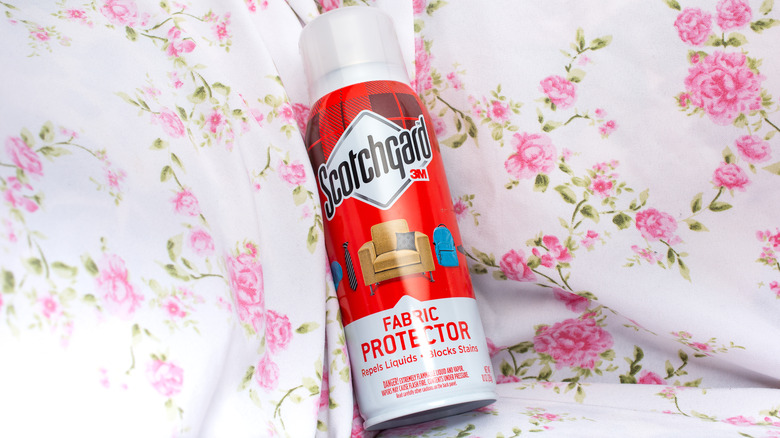Why Scotchgarding Your Furniture Might Be A Big Mistake
You plunked down a hefty chunk of change for your new sectional sofa, and you want it to last for years. One of the best ways to protect upholstery is with a product like Scotchgard, a UV- and stain-repellent spray that prevents spills from seeping deep down into the fibers of the fabric and causing stains.
Interestingly enough, Scotchgard, a 3M product, was created by accident. Chemist Patsy Sherman was attempting to develop a rubber that wouldn't break down when exposed to jet fuel when she stumbled upon the formula for Scotchgard, according to the American Association for the Advancement of Science. "When she was experimenting with a mixture, some of it accidentally dropped on the tennis shoe her assistant was wearing," per the association. "The assistant was unable to clean the substance from her shoe, as it seemed impervious to water or alcohol, which fascinated Sherman." Soon, in 1956, it was sold as the first Scotchgard product.
While the spray has undoubtedly been a boon for homeowners — and one of 3M's best-sellers, behind the Post-It — applying Scotchgard to your furniture isn't always a good idea. Sometimes, the product can do more harm than good. Here's why Scotchgarding your furniture might be a big mistake.
You could ruin your furniture by using Scotchgard wrong
First, as maker 3M will tell you, never apply Scotchgard to furniture without doing a test for colorfastness first. If not, the product could remove color from your upholstered furniture and ruin it. Spray a small patch of the furniture in an unnoticeable place, wipe it with a white cloth, and check to see if any color has come off on the cloth. If so, your item isn't colorfast, and you shouldn't use Scotchgard on it.
Another risk is that you can apply too much spray and create an irreversible stain where the Scotchgard has oversaturated, per HGTV. This buildup of chemicals can also irritate people or pets who come into contact with the surface, so be sure to use a light hand and follow the instructions on the product label.
Finally, using regular Scotchgard on leather or suede furniture can completely ruin the material as the product is meant to be used only on washable fabrics like polyester, nylon, cotton, silk, and wool, per SFGate. If your furniture comes with a care tag with an X on it, which most leather furniture pieces do, that means you should not clean it with water or solvents. Instead, use the Scotchgard tailormade for leather.

